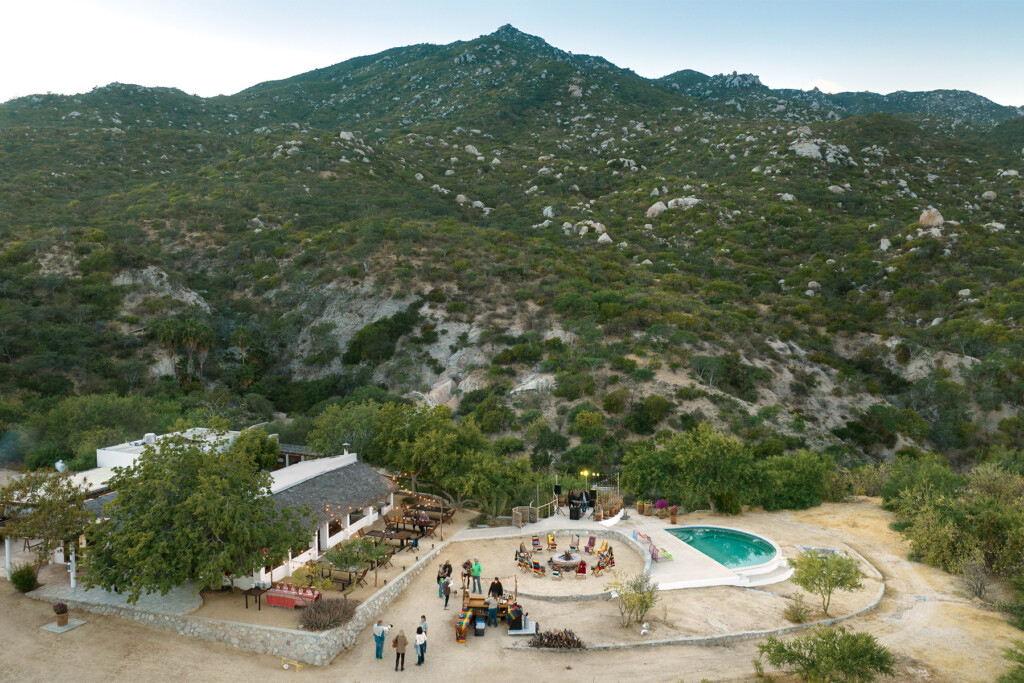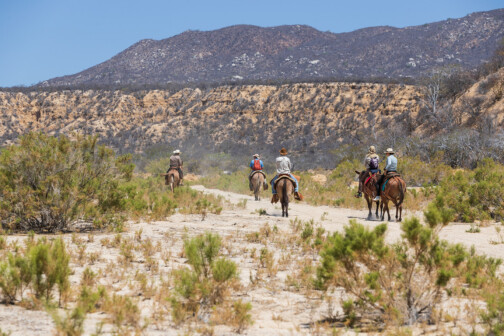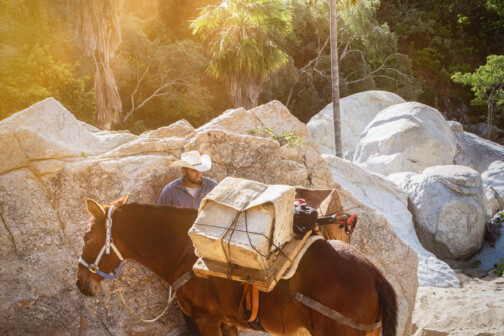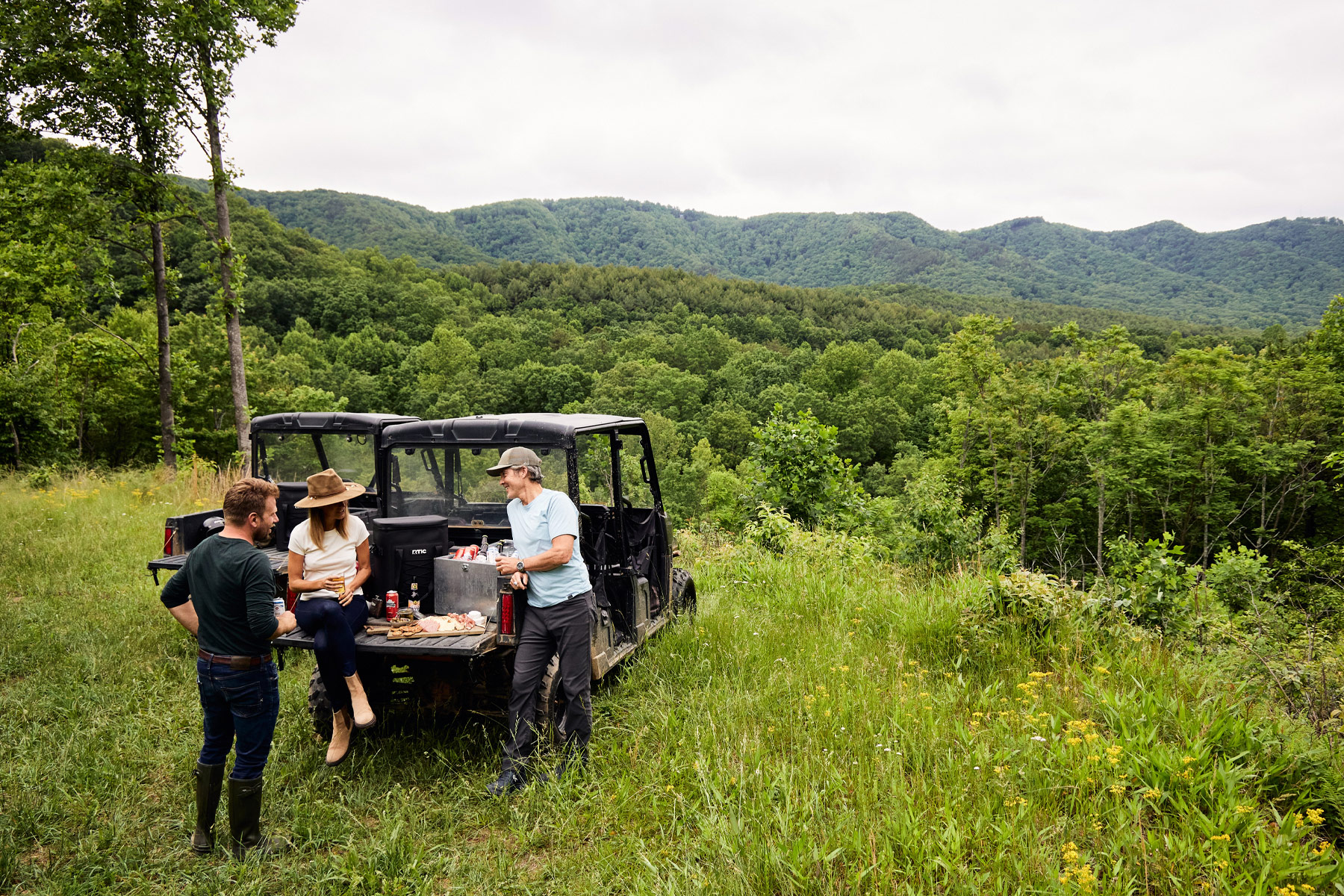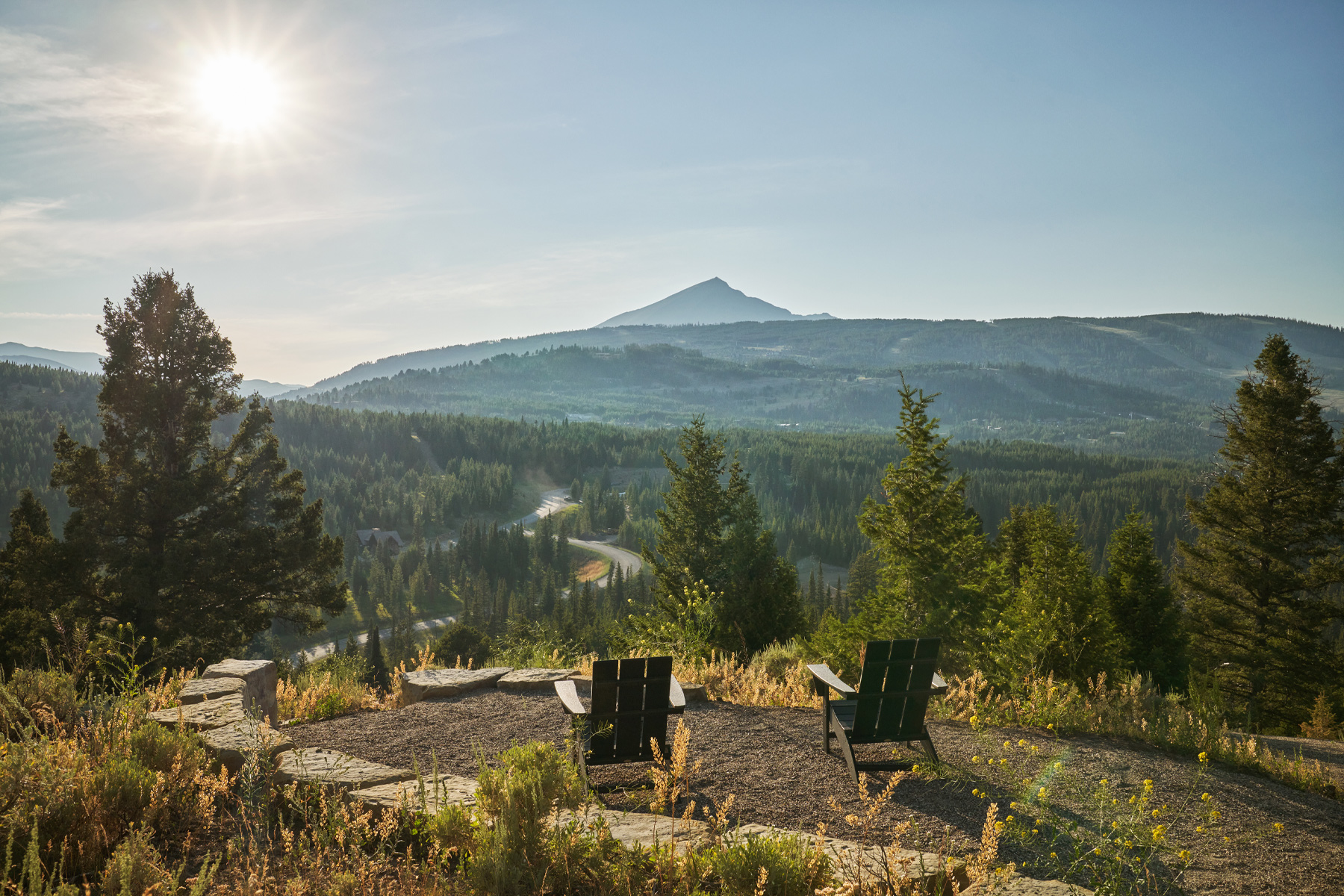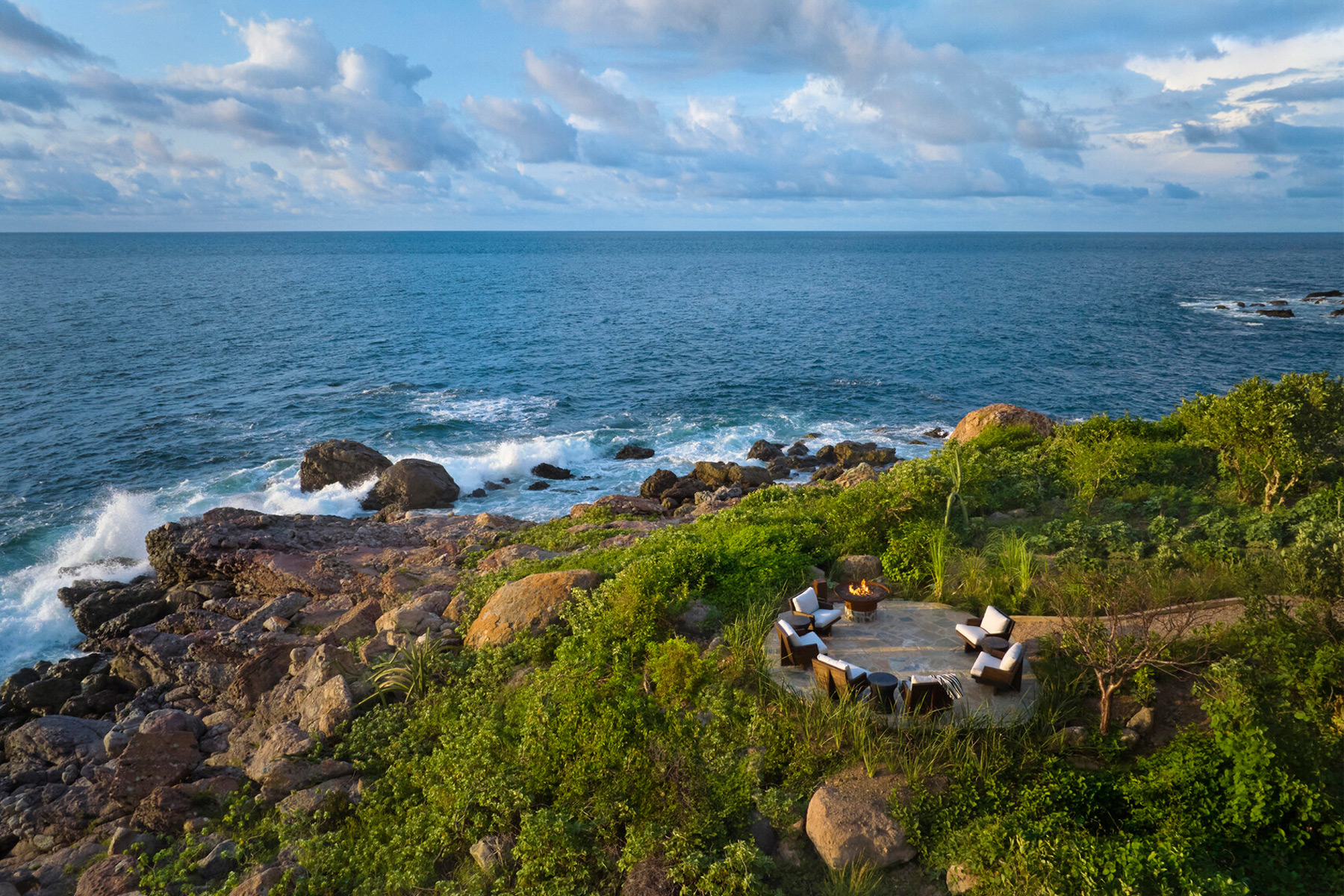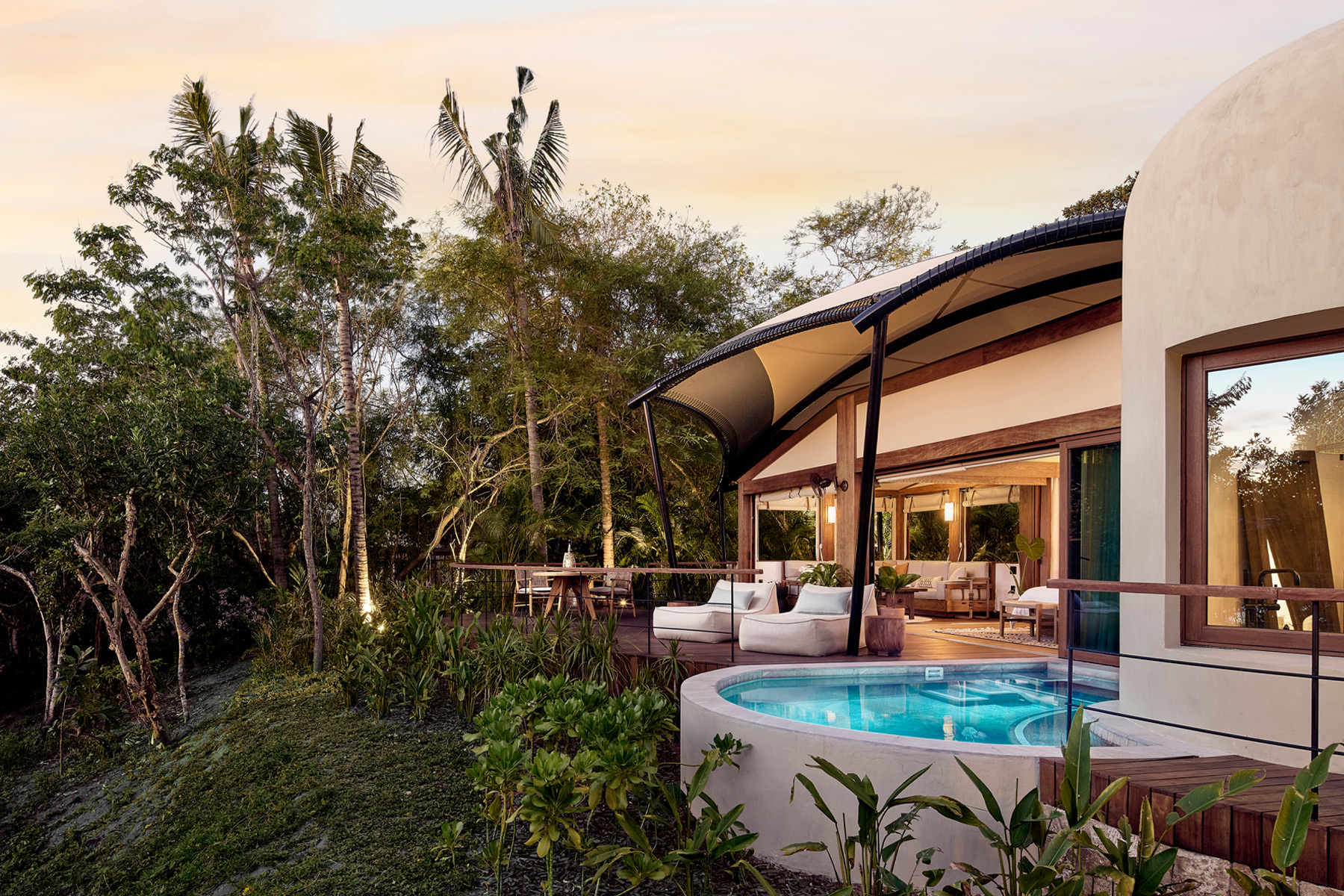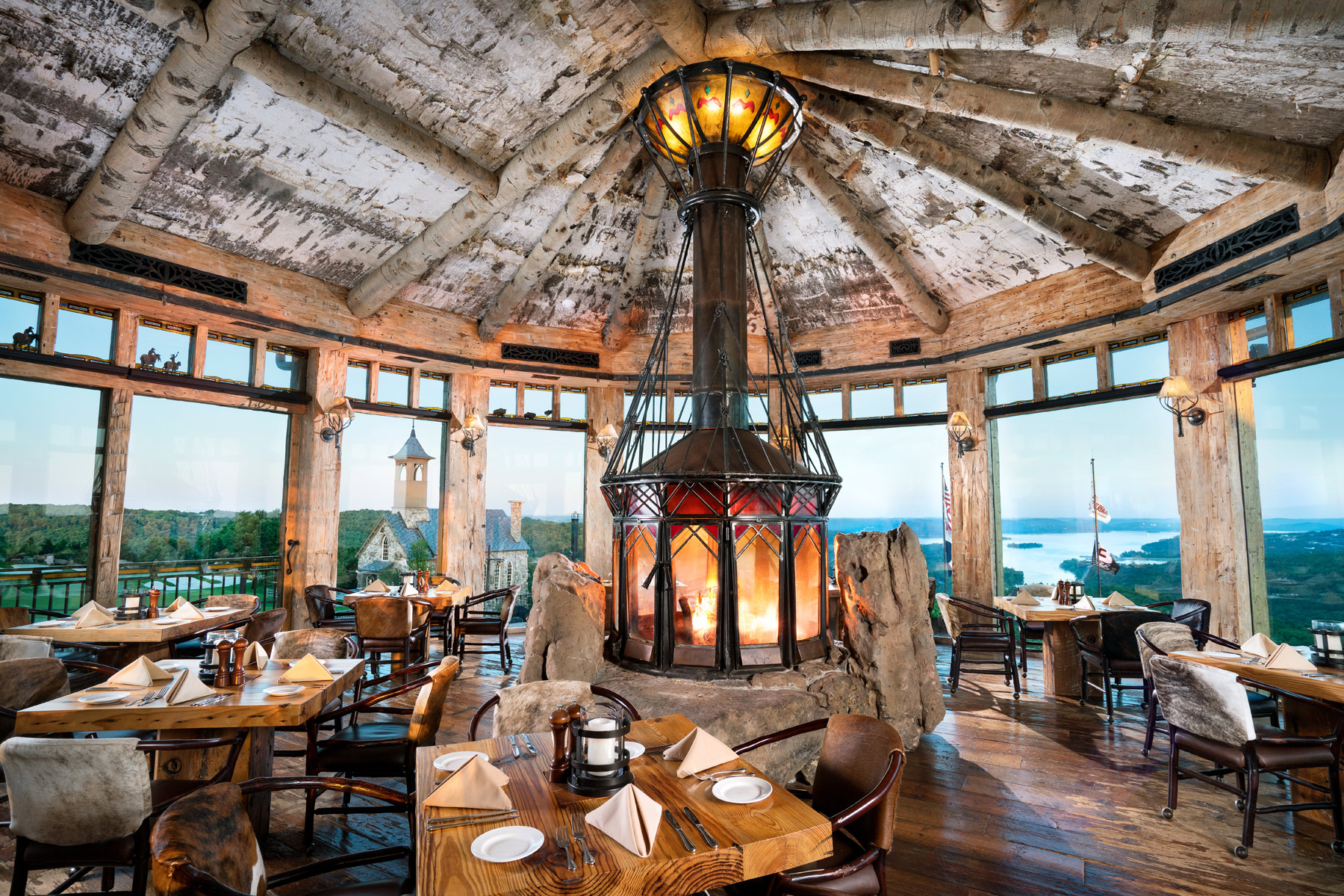From June 2023
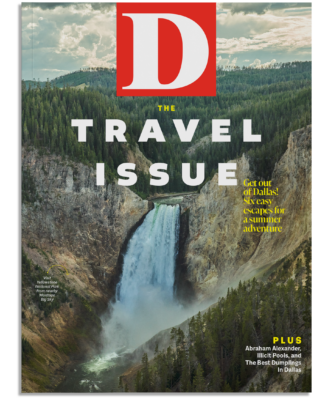


As the sun blazes overhead and the Sea of Cortez glitters in the distance, my guide, Pablo, a local biologist, shows me around Rancho Cacachilas. On this 35,000-acre ranch and glamping destination in the Mexican state of Baja California Sur, the dry land is alive with flowering cacti, chirping birds, and that high-desert silence that somehow manages to echo.
The Edenic quality of the place is partly thanks to the money behind it—specifically that of Christy Walton, widowed daughter-in-law of the founder of Walmart and one of the world’s most open-handed philanthropists. But Rancho Cacachilas is, in a phrase, Walmart’s polar opposite. While many resorts claim to be eco-friendly, the descriptor is often meaningless (think paper straws in the poolside cocktails), whereas the Rancho is an oasis of permaculture and holistic land practices, where all energy is solar, the internet doesn’t exist, and showering involves a bucket.
Pablo introduces me to the mules, the stars of the mule riding experience, a two- to four-and-a-half-hour trail ride led by one of the ranchers. Then we visit the goats that feature in the artisanal cheese workshop, where guests have the opportunity to milk the nannies, learn how cheese is made, and then taste samples paired with wine. He shows me the water retention dams that catch the rainwater, contributing to a model of agriculture in Mexico’s most arid state that’s not just sustainable but regenerative.
“In a sustainable system, you leave no footprint,” Pablo says. “In a regenerative system, you do better. You don’t just leave the environment untouched; you add to it.” That means, among other strategies, that nothing on-site is artificial (they use manure as fertilizer, fermented garlic as pest repellent) and that their livestock grazing system functions to reverse erosion.
Rustic though the property is, glamping at Rancho Cacachilas is as posh as glamping gets. Each of the 10 “palapa casitas” comprises a private porch and spacious tent with either two twin-size beds or one king. During the day, a cleaning service tidies up while you’re out hiking or mountain biking on the 37 miles of trails or cooling off in the natural pool.
The property doesn’t have a restaurant, per se, just outdoor tables for dining al fresco on meals made from scratch with ingredients harvested on the property and sourced from local suppliers and producers. There’s never a menu, just one meal for everyone, though the chef will accommodate dietary restrictions. Culinary events throughout the year feature renowned chefs from Los Cabos and beyond and may be worth planning a trip around. (They’re advertised on the Rancho’s social media accounts.) At one dinner, my salad includes edible flowers, carrots yanked straight from the soil, and, of course, goat cheese. The ravioli is fresh, dressed in homemade tomato sauce, and paired with agua de jamaica.
The most surprising thing about Rancho Cacachilas may be the fact that few people know it exists. I feel torn about sharing it. But hoarding it would feel like hoarding all those stars I saw as I lay in my hammock, outside my tent, soaking up the desert quiet.


I’m not really sure where Greensboro is, or why I am flying to North Carolina to get to the Meadows of Dan, Virginia, or why the Primland Resort is in a town with a name that is both idyllic and creepy. But no matter. It’s a short, direct two-and-a-half-hour flight, and a lovely man named Roger is there at the gate in the tiny, quaint airport to collect me for my weekend getaway to the Blue Ridge Mountains.
The hourlong drive operates as a sort of decompression chamber as we head up into the mountains, past homesteads with ancient log cabins fronted by batches of blooming daffodils and into stands of still-bare poplar and oak trees that are blanketed underneath by shoulder-high rhododendrons about to burst into bloom. When the mountain ridge finally emerges, it is truly, weirdly blue, and I have to do everything in my power not to launch into a John Denver verse and scare poor Roger silly. I need him to keep his focus on the twisty road.
When we reach the property, there is still a 30-minute drive to get to the lodge, as this sprawling 12,000-acre mountaintop resort started as the hunting retreat of an outdoorsy tycoon, the French-Swiss billionaire Didier Primat, now deceased, whose family made its fortune with Schlumberger, the American-French oilfield services company. In fact, we pass his former home first, a modest bungalow with a tennis court and a spectacular vista, which you can now reserve. The Celestron CGE Pro 1400 telescope he once kept there on the patio is now in the main lodge in an observatory designed to look like a grain silo.
The lodge itself isn’t as highly styled as some other Auberge properties, say the Hotel Jerome in Aspen or the Commodore Perry in Austin. But unlike those resorts, which are set in cities that are often overcrowded these days, the Primland feels like you’ve truly left the world behind. Even though I can see the Donald Steel-designed 18-hole golf course from my expansive suite, at night—in every direction, on every ridge—there isn’t a single visible light from another property.
After a deeply satisfying pork chop and grits dinner in the lodge restaurant, s’mores by the fire pit, and a bourbon nightcap (get the maple bourbon sour, not the Old Fashioned, or ask the knowledgeable sommelier, Seth, for an expert recommendation from the Schlumberger wine cellar), I get a restful night’s sleep. In the morning, I join a young couple from Georgia and their little terrier on a guided ATV tour. I’m nervous to drive my own vehicle, but with a little taunting from my cohorts and a brief practice run, I take the wheel and am glad I do. We race past the hunting dog kennel and pheasant run, up and down hills, across rivulets, and behind the skeet course. Giggling aloud to myself like a kid, I feel more mindful than I can remember, attuned to the speed, the sounds, the scents, to the wind and splashes of mud and glimpses of clear blue sky.
The next day, fortified by a country ham and biscuit breakfast, I decide to hike one of the many trails. The sky has clouded over but my weather app says no rain, so I head out on a challenging option. The route takes me along the ridge, with clear views across the gorge. The trail is studded with rocks and lichen, waterfalls and gurgling streams. For miles, I pass no one, hear no one. I imagine myself a 19th-century trapper or Indigenous hunter until I hear a nearby rustling and suddenly remember Roger’s warning of black bears and copperhead snakes, but, to my relief, four wild turkeys cluck and stroll across the path.
I’m heading down into a wooded valley when the rain starts. Nervous about the slick rocks, I pick up my pace. But the spring rain is warm, and there is nothing for me to do but forge ahead, the smells of earth and spring growth rising as the rain pours down. My poor judgment feels like a gift.
That night, after a shower and steam in the spa, I head to the observatory, where an amateur astronomer gives a nightly presentation of the heavens. I line up to take my turn pressing my eye to the lens of Primat’s massive telescope. “Do you see that faint haze?” the astronomer asks. I do. “Those are stars being born,” she says.
For the second time that day, I am reminded of my place—one small speck in a wondrous, dangerous universe.
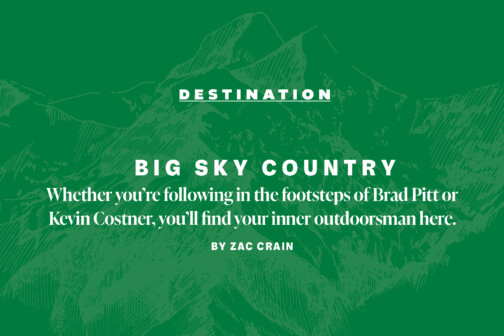

The joke I heard on the way to Montage Big Sky is that all the people who moved to Montana because of 1992’s A River Runs Through It are ticked off at the people moving here now because of Kevin Costner’s Yellowstone. Craig, who drove me from the airport in Bozeman, about an hour away, says he prefers the prequel miniseries 1883. He’s also surprised that I flew directly from Dallas; Southwest (apparently pretty quietly) launched the route in 2021.
Jokes aside, it’s immediately clear what Montana’s appeal is. Just look through any nearby window or, better yet, go outside. That’s what I did almost as soon as I dropped off my bags at the resort, and I stayed out there as much as I could for the next few days.
Turns out, I’m amazing at shooting a bow and arrow. Not bow hunting, technically, because I was aiming at life-size wildlife targets shaped like deer and bears and so on, and maybe not exactly world class, but who knows if my talent had been discovered earlier in life? Will—my guide from Compass Sports, which handles all of Montage’s recreational activities—told me I set a course record, and I know he was gassing me up a little, probably, but not a lot. Once I figured out which eye to use (I am sort of selectively ambidextrous), I missed only a couple of shots the entire time, and my hits were hits, right in the meaty center of all those fake hearts. (Will also told me that Bozeman is “the next Boulder,” and he would know, since that is where he came from.)
Also, I am a pro at driving one of those four-wheel-drive vehicles that look like golf carts from Fury Road. With Greg, my new pal from Compass, riding shotgun, I took one to the top of a mountain ridge and back down on a rough-hewn path littered with small boulders and slick with mud. Regarding the latter, I managed to steer out of a skid that sent us sideways on a 45-degree decline. Regarding the former, the 36-mile round trip shook me enough to burn almost 1,000 calories (according to my Apple Watch). But it was all worth it when we got to the top. “Now you can see why they call it Lone Mountain,” Greg said. “Days like this it almost looks fake, like a painting.”
I was not as good at fly fishing, which I had done before and which I still couldn’t quite get the hang of. At least not for a good long while, even with a professional-level teacher helping with my form and telling me within an inch or two where a fish may be lurking as we floated down the Madison River. It was a beautiful afternoon, regardless, perfect August weather on a mountain-fed stream that looked and smelled and felt like a real river, not some glorified ditch. Imagine fishing in a Coors commercial.

It’s immediately clear what Montana’s appeal is. Just look through any window or, better yet, go outside.
Skill level-wise, I was somewhere in the middle when it came to an impromptu outing to Hebgen Lake. After fishing, Greg invited me for a cruise on his boat, where we were joined by a handful of long-term seasonal Big Sky workers in their 20s. I was fine enough sitting on the back of the boat and soaking up the sunshine and the deep-blue view. Maybe not quite as good at shotgunning a beer, something I either have never done—I prefer chugging, like a gentleman—or haven’t done in so long that I’ve forgotten. But I did well enough to fit in for the afternoon.
I suspect I would not have done as well skiing, but I’ll have to go back and find out when there is snow on the ground. And there is plenty of skiing (and snowboarding) to be had if you are interested; Big Sky has the largest skiable terrain in North America. (In fact, skiing is why Big Sky exists. NBC newscaster Chet Huntley started developing one of the first ski resorts in the area in the early 1970s, just before he died.)
The hotel itself: a high-end ski lodge decorated with giant David Yarrow photographs of various wildlife among its $1 million in curated art. It’s the first luxury resort in Big Sky, and the biggest building in Montana (deceptively so), big enough to comfortably house a full gym and spa.
You can take a car to the village down the mountain, but there is no real reason to. At least until you have to leave the premises and head home. The drive back to Bozeman was slower because Montana is seemingly always developing, from Huntley’s time until now. “Montana has three seasons,” my new driver told me. “Winter, summer, and construction.”


Long buried beneath loads of unfolded laundry and 16,238 unread emails, my inner peace resurfaces midway through a sound healing session, when my guide, Adrian, places a singing bowl on my sternum and strikes the side, sending humming vibrations through my chest. I’m lying in an open-air gazebo a thousand miles from home, atop a rocky cliffside that overlooks the Pacific Ocean. The wind whips the canvas curtains that line the structure’s perimeter and sends the waves crashing, one after another, onto the rocks below. The smell of incense swirls in the salty air. And through closed eyes, I can see the glow of the sun’s last rays before it disappears behind the horizon. It’s the best I’ve felt in who knows how long. And it took less than three hours of being at Naviva, A Four Seasons Resort, for months of stress and tension to melt away.
Tucked among 48 forested acres on the private peninsula of Punta Mita, Mexico—a 45-minute drive from the Puerto Vallarta airport—the just-opened, adults-only Naviva is an environmentally immersive luxury escape. The facility’s guest accommodations, outbuildings, and pathways were woven strategically within the landscape to preserve as much of the natural vegetation as possible. Combined with the fact that the capacity maxes out at 30 guests (we were just two of eight during our visit), the unspoiled surrounding provides a level of tranquility and solitude one wouldn’t expect less than a half-mile from the bustling bars and restaurants of Four Seasons Punta Mita (which Naviva guests have full access to).
Nature was also at the forefront of the resort’s design, which utilizes natural materials and facilitates indoor-outdoor cohesion wherever possible. The 15 stand-alone guest “tents”—which demonstrate a very loose application of the word—are deluxe in every way, with sliding glass walls that allow you to open the well-outfitted bedroom to the screened-in living area, outdoor patio, and private plunge pool.
Despite its wealth of health-promoting programming, Naviva doesn’t bill itself as a wellness resort. Instead, it emphasizes liberation rather than restriction; saying yes to new experiences and enjoying more of whatever makes you happiest. If that’s culinary indulgence, the food and drinks are top notch. If that’s relaxation, grab a cabana on the secluded beach, enjoy a spa treatment, or sample the range of om-inducing options, from yoga and meditation sessions to the aforementioned sound healing. Or, if you’re looking to push your limits, hit the outdoor gym (with weights carved from local stone), try a free-diving breathwork session, or brave the temazcal, a sweat lodge ceremony meant to symbolize rebirth. Best of all, because Naviva is all-inclusive, you can say yes—to another round of cocktails, a massage, or a mind-opening experience—without stress.
Guest requests, too, are only answered in the affirmative. The staff, who you’ll come to know by name, are there to cater to your every whim and facilitate what they call “unscripted” moments, like surfside dinners or private reiki sessions. You’re made to feel as though you’re staying at a friend’s house, with all the familiarity and flexibility that comes along with that.
On the last full day of our stay, after enjoying a poolside lunch of fresh ceviche, I was the lone guest floating in the three-level infinity pool. Visions of my rapidly filling inbox flashed in my mind before Jorge, the poolside server, approached to ask if I’d like my mezcal margarita refreshed. For one more fantastical day, I would hold on to my rediscovered Zen and the power that saying—and hearing—“yes” can hold.
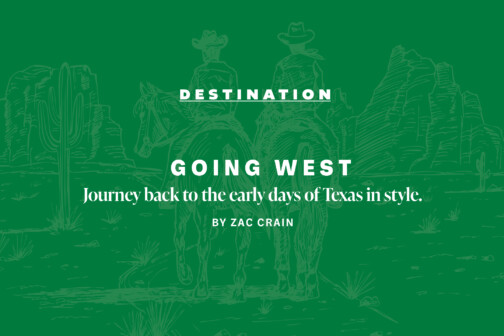

By the time I got to Cibolo Creek Ranch, about 30 miles south of Marfa, in West Texas, I felt like I had driven backward in time. That’s kind of the point. The resort is built around three forts that have been around since Milton Faver settled in the area in the 1850s, and current owner John B. Poindexter has done a good job of restoring the site to its original state (while adding casual luxury) without turning it into a living museum. There are no employees in period costume, but on a quiet morning, looking out at the Chinati Mountains as horses graze nearby, it certainly evokes its earliest days.
On this particular trip, it felt like I had traveled back into a more recent era, from mid-March into, say, early January. When I woke up at Thunderbird Marfa (the classic midcentury motel freshened up by Lake Flato Architects in the early 2000s), I found a blanket of snow outside. After digging out my car with a water glass from my room and narrowly avoiding t-boning a Marfa police SUV, I picked up a coffee and bagel from Aster Marfa and made a slightly white-knuckled drive to Cibolo Creek. (Remember, on icy roads and life in general, always steer into the skid.) The hassle was worth it once I turned onto the rough-hewn road leading to the ranch and was finally able to pause and appreciate that I was surrounded by snow-covered mountains.

Cibolo Creek’s setting is arresting whether or not it is accented by snow—which, Texas being Texas, I was able to verify later on my first day, since most of the snow had vanished by the afternoon. It’s not just the view. It’s the sound, or lack thereof—a deep, unspoiled quiet that barely exists anywhere anymore. (Possibly this was because I had arrived just after what was, by all accounts, a crazy week, when the rooms were filled with spring-breaking families.) It’s the clean, high-altitude air that makes your lungs feel as pink as a tween girl’s bedroom. Walk around for an hour and it’s like getting a spiritual shiatsu.
There is plenty more to do than just walk around, of course. If you want to explore the 30,000 acres, you can saddle up a horse or hop on an ATV or ride in one of the open-air Humvees up into the mountains. I ended up taking the mountain tour in a four-wheel-drive truck driven by Gerardo, who was working the front desk and has strong opinions about trucks and a music collection full of doo-wop and classic rock. We eventually caught up with a trio of hunters looking for aoudads, the wild sheep found in the Southwest. Hunting is not my thing, but you can do that at the ranch. You can also shoot at something without a pulse, if you prefer, at the 12-station sporting clay course Gerardo took me past as we made our way back from the top of a ridge 6,000 feet above sea level. Nearby, we also passed the ruins of several primitive stone cabins travelers used for overnight stays a century ago.
Back at the resort, you can explore the history of the area in one of the exhibitions set up in a few corners of the main fort, or your inner self via a yoga class or guided meditation. I explored how much small talk I could make over the course of a weekend because all of the meals (all delicious, usually with over-the-border flavors) at Cibolo Creek are communal. Seated around a long table with couples from as far away as Alaska, I found, to my surprise, that conversation with my neighbors came easily. Maybe it’s because the ranch had made all of us so comfortable.
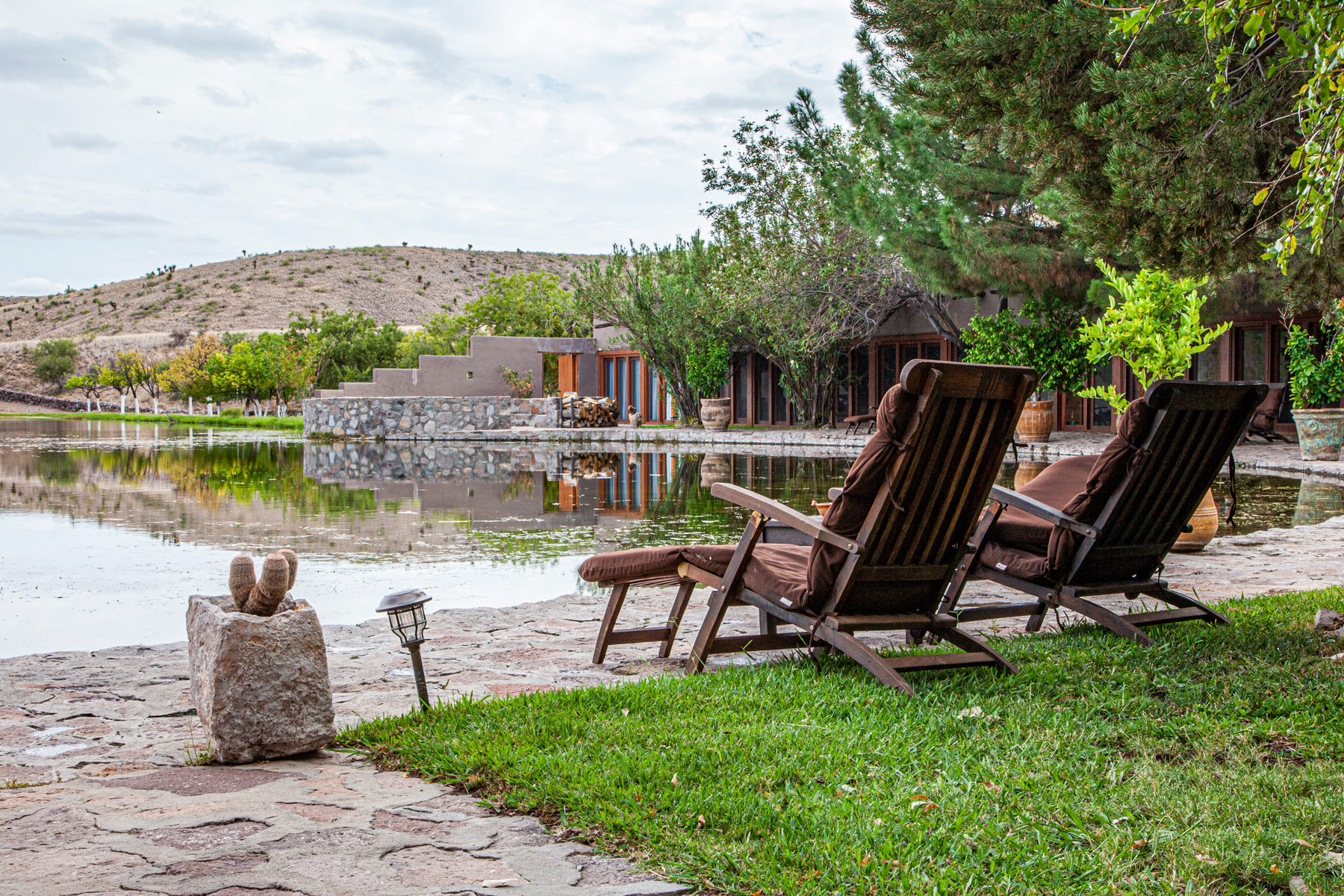
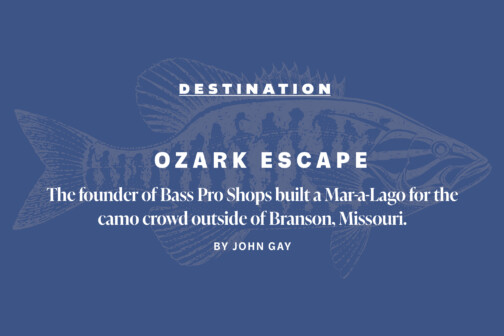

Best known as the founder of the outdoor retail giant Bass Pro Shops, Johnny Morris is also the visionary behind Big Cedar Lodge, a wilderness-themed destination resort that is spread across 4,600 acres near Branson, Missouri. An hour from where Morris opened his first bait shop in the back of his father’s liquor store, it’s a far cry from his humble roots.
When he bought the property, in 1987, it was little more than a derelict motel in the woods. When the defunct and sinisterly named Devil’s Pool Ranch was built, in 1947, its draw was a stable and a pool; the White River wouldn’t be dammed for another decade to form the spectacular 43,000-acre Table Rock Lake. When he bought it, Morris envisioned the property as a place for customers to test fishing boats. Then came three rustic-luxury lodges, 196 cabins, eight restaurants, 100 boat slips, five golf courses, the Ancient Ozarks Natural History Museum, and the 50,000-square-foot Fun Mountain with a quarter-mile go-kart track.
My first stop is the Bass Pro Shops Shooting Academy. With a picturesque backdrop of rolling hills and dense stands of hardwoods, the range offers instruction on sporting clays, American skeet, wobble trap, and 5-stand. After a few rounds of trapshooting to knock the dust off before the next dove season, I head to Top of the Rock, the highest point in Taney County.
Plump groundhogs scurry around the edges of flowing streams and scenic cliffs as I scoot along winding, wooded nature trails on an electric golf cart. The path eventually slopes into Lost Canyon Cave, where I snag a cocktail at the subterranean Bat Bar surrounded by towering underground rock formations and cascading waterfalls.
As the evening air cools, I head to Osage Restaurant, where I cozy up to a wood-burning stone fireplace and watch as the sunset is ceremoniously pronounced by the firing of a Civil War-era canon. After dinner, I find myself following the dark, rock-lined stairwell beneath the restaurant to the End of the Trail All-American Wine Cellar.
As I enjoy a glass, I do some math. It will be a while before my wife lets my three young kids come along on my annual amenity-free hunting trip in the wilds of New Mexico. But it won’t be long before she’ll be willing to unleash them on Fun Mountain.
This story originally appeared in the June issue of D Magazine with the headline, “Get Side Tracked.” Write to [email protected].


